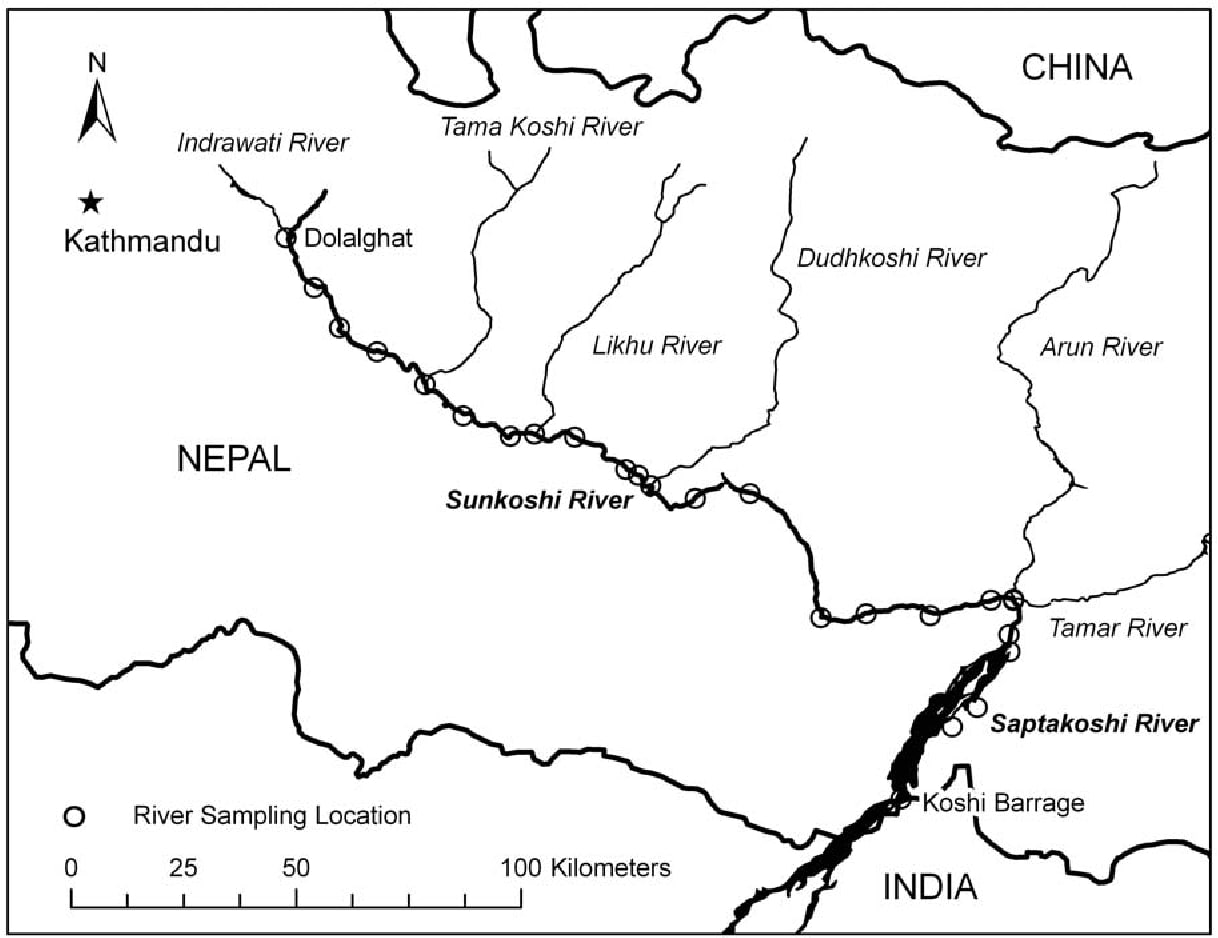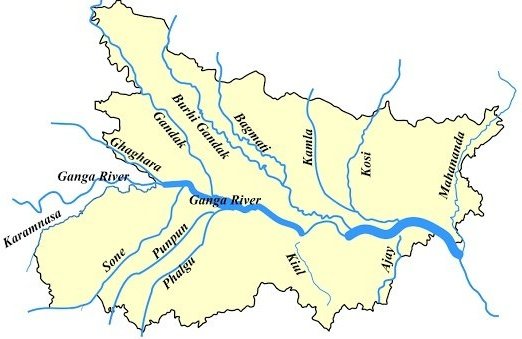- Home
- Prelims
- Mains
- Current Affairs
- Study Materials
- Test Series
 EDITORIALS & ARTICLES
EDITORIALS & ARTICLES
June 02,2024 Current Affairs
Recently, a dialogue on systemic issues of poor electricity supply faced by the farmers in Rajasthan has recommended the establishment of a farmers’ cooperative-based distribution model with the regulatory viability under the Electricity Act 2003.
- The dialogue was organized by the Jaipur-based Centre for Energy, Environment and People (CEEP) as part of the ‘Vidyut Samvad’ series here earlier this week.
Cooperative Society:
- Definition: A cooperative society is a voluntary association of individuals with shared needs who come together to pursue common economic interests.
- Objective: The primary goal of any cooperative is to offer assistance to its members, particularly prioritizing the welfare of the underprivileged segments of society, through the principles of self-help and mutual aid.
- Operational Approach: By establishing cooperatives, individuals unite as a collective, combining their individual resources, optimizing their utilization, and deriving mutual benefits.
- In a cooperative society, individuals can join voluntarily and are also at liberty to exit, although they are unable to transfer their shares.
- Types of Cooperatives in India: Consumer Cooperative Societies, Producer Cooperative Societies, Cooperative Credit Societies, Cooperative Farming Societies, Housing Cooperative Societies, and Marketing Cooperative Societies.
- Among the 300 largest cooperative societies globally, India’s Amul, IFFCO, and KRIBHCO are featured.
Steps taken to strengthen the cooperative movement in India:
- Ministry of Cooperation: Established with a distinct administrative, legal, and policy structure aimed at enhancing the cooperative movement.
- The Banking Regulation (Amendment) Act, 2020: Empowers the RBI to replace the boards of Cooperative banks and permits Cooperative banks to raise capital through public issues or private placements of equity or preference shares.
- The National Agricultural Co-operative Marketing Federation (NAFED): Aids Marketing Cooperatives in the States to enhance their marketing operations and improve services to their members.
- The National Co-operative Development Corporation (NCDC): Established in 1963, it offers assistance in the form of loans and subsidies for marketing, processing, storage, and share capital practices in cooperative sugar, spinning, and weaving mills.
- Cancellation of the 97th Constitutional Amendment Act, 2011 by the Supreme Court: This amendment aimed to protect cooperatives by amending Article 19(1)(c) and inserting Article 43B and Part IXB. However, the Court ruled that Part IXB of the Constitution applies solely to Multi-State cooperative societies within states and Union Territories.
- Part IXB of the Constitution outlined regulations for operating cooperative societies.
Electricity Act 2003:
- The Electricity Act 2003, enacted by the Government of India, aims to restructure and reform the country’s power sector.
Key Provisions:
- State Electricity Board dismantling: Aimed to split SEBs into distinct generation, transmission, and distribution entities for competition and efficiency.
- Delicensing of generation: Removed generation licensing, encouraging private investment and diversification.
- Transmission and distribution regulation: Maintained licensing to ensure reliable supply and prevent monopolies.
- Renewable energy promotion: Mandated incentives and obligations for renewable energy generation.
- Open access and trading: Enabled consumer choice and transparent electricity trading.
- Regulatory bodies establishment: Established SERCs and CERC to regulate tariffs, compliance, and disputes.
National Rural Electrification Policy:
- National Rural Electrification Policy was notified in compliance with Sections 4 & 5 of the Electricity Act, 2003 by the Central Government.
- Relevant extracts of the National Rural Electrification Policy, 2006
- Goals: For villages/habitations where grid connectivity would not be feasible or not cost effective, off-grid solutions based on stand-alone systems may be taken up for supply of electricity
- State government should, within 6 months, prepare and notify a rural electrification plan which should map and detail the electrification delivery mechanism.
- The plan may be linked to and integrated with district development plans.
A river cleanup campaign that removed 24,575 kg of waste from the Sunkoshi River banks and waste hotspots was recently completed under the PLEASE (Plastic Free Rivers and Seas of South Asia) program.
Sunkoshi River:
- Sunkoshi, also known as the ‘river of gold’, is a river in Nepal that is part of the Koshi or Saptkoshi River system formed by the seven (sapta) rivers joining in east-central Nepal.
- Course: River Sunkoshi’s water source is located in the Zhangzangbo Glacier in Tibet, which merges with River Saptkoshi, ultimately joining the Ganga in the Katihar district of Bihar in India, before finally draining into the ocean at the Bay of Bengal in Bangladesh.
- It is one of the longest and most popular rivers for rafting in Nepal, and is known for its challenging rapids.
- It forms the watershed for most of eastern Nepal.

Koshi River:
- It is a transboundary river which flows through China, Nepal, and India.
- It is a prominent tributary of the Ganges.
- Course: Originating from the Tibetan Plateau, it crosses the Himalayas and flows through the Mahabharat range and Siwalik hills, reaching the plains of eastern Nepal and finally meeting the Ganges in Bihar, India.
- The Kosi drains an area of 74,500 sq.km, of which only 11,070 sq.km lie within Indian Territory. The Koshi River system drains about 45% of Nepal.
- The Kosi River valley is bounded by steep margins that disconnect it from the Yarlung Zangbo River to the north, the Mahananda River to the east, the Gandaki to the west, and the Ganga to the south.
- It is well known for its tendency to change course, generally in a westward direction. During the last 200 years, the river has shifted westwards for a distance of about 112 km and has laid waste large tracks of agricultural land
- Kosi is known as the "sorrow of Bihar", as it has caused widespread human suffering in the past due to flooding and very frequent changes in course, when it flows from Nepal to Bihar.
- Tributaries: It has seven major tributaries: Sun Koshi, Tama Koshi or Tamba Koshi, Dudh Koshi, Indravati, Likhu, Arun, and Tamore or Tamar.

Reserve Bank of India’s annual Report 2023-24 highlights India''s stagnant millet acreage and production.
- India grapples with stagnation in both acreage and production of millets, according to Reserve Bank of India’s annual report for 2023-24.
What is Millet?
- It is a collective term referring to a number of small-seeded annual grasses that are cultivated as grain crops, primarily on marginal lands in dry areas in temperate, subtropical and tropical regions.
- Some of the common millets available in India are Ragi (Finger millet), Jowar (Sorghum), Sama (Little millet), Bajra (Pearl millet), and Variga (Proso millet).
- The earliest evidence for these grains has been found in Indus civilization and was one of the first plants domesticated for food.
- It is grown in about 131 countries and is the traditional food for around 60 crore people in Asia & Africa.
- India is the largest producer of millet in the world.
- It accounts for 20% of global production and 80% of Asia’s production.
Global Distribution:
- India, Nigeria and China are the largest producers of millets in the world, accounting for more than 55% of the global production.
- For many years, India was a major producer of millets. However, in recent years, millet production has increased dramatically in Africa.
Reasons for Stagnant Millet Production:
- Incentives for alternative cereals: The Indian government''s MSP (minimum support price) schemes promote the cultivation of fine cereals over millets.
- Consumer preferences: There''s a visible shift in consumer choices favoring fine cereals, contributing to reduced millet cultivation.
- Global comparison of productivity: India''s millet productivity stands at 1.4 tonnes per hectare, which is lower compared to China (3 tonnes/ha), Ethiopia (2.5 tonnes/ha), and Russia (1.5 tonnes/ha).
- Yield gap challenges: The comprehensive cost of cultivation survey (CCCS) for 2021-22 highlights a significant yield gap in millet production, indicating a potential for improvement.
- Dependence on rainfall: Millet yield, especially bajra, heavily relies on rainfall due to its predominant cultivation under rain-fed conditions.
- Lack of irrigation: Despite being drought-resistant, millets would benefit from minimal but assured irrigation to help close the yield gap.
- Factors affecting yield gap: Labor, fertilizer, and machine usage are found to be negatively and significantly related to the yield gap, while the adoption of hybrid seeds shows a positive impact on yields.
A recent analysis by The Lancet Public Health reveals that globally, men face a greater disease burden and tend to die prematurely compared to women.
Key Highlights of the Lancet Study:
- Gender Disparities in Disease Burden: In 2021, men bore the brunt of 13 out of the top 20 causes of disease burden compared to women, including COVID-19, road injuries, and various cardiovascular, respiratory, and liver diseases.
- These conditions disproportionately led to premature deaths among men.
- Global Trends in Women’s Health: Conversely, globally, women predominantly encountered non-life-threatening conditions such as musculoskeletal issues, mental health disorders, and headache disorders.
- COVID-19 Impact: In 2021, COVID-19 emerged as the primary cause of health loss globally, with males experiencing a 45% higher health loss from the virus compared to females.
- Gender Disparity in Ischaemic Heart Disease: Ischaemic heart disease ranked second in terms of the absolute difference in health loss between males and females.
- Males suffered a 45% higher health loss from heart disease compared to females.
- Cause of Premature Male Death: The research links premature male deaths to cancer, heart disease, and road injuries.
- While common among men, lifestyle-related comorbidities remain significant contributors.
- Women’s Health Challenges: Women’s health issues primarily include low back pain, depression, headaches, anxiety disorders, musculoskeletal conditions, dementia, Alzheimer’s disease and HIV/AIDS. These may not lead to premature death but keep them sick throughout their lifetime.
- Example: In 2021, females had over a third higher DALY rates than males (1,265 vs 787 DALYs per 100,000). In South Asia, this gap widened to over 50% (1,292 vs 598 DALYs per 100,000).
- Rise of Mental Health cases among Women: Women worldwide are disproportionately affected by mental health conditions.
- For instance, in 2021, the health loss attributed to depressive disorders was more than a third higher among females than males globally, with rates of 1,019 vs 671 DALYs per 100,000.
Causes of Disease Differences:
- Gender Differences in Adolescence: In adolescence, disparities between genders become apparent. This period not only marks the onset of biological distinctions but also sees the influence of gender norms shaping individuals’ lives.
- Bias in Health Care Systems: There is a bias in health care systems where they will more easily diagnose women with mental disorders.
- At the same time, men are less likely to get help for mental health conditions due to perceptions of masculine norms that work against their seeking or getting help.
- Inadequate Treatment: Research indicates that women experiencing pain are frequently disregarded by healthcare providers and receive inadequate treatment when they seek assistance.
- Additionally, a recent study revealed that healthcare professionals, regardless of gender, were less inclined to provide assistance for lower back pain when the patient was female.
- Triple Burden on Women: Women starting rehabilitation programs for lower back pain often begin in worse condition than men, possibly due to a triple burden of work, household maintenance, and caregiving duties, hindering access to appropriate services.
- Narrow Focus on Women’s Health: There has been a tendency within global health systems to focus on women’s reproductive capacity, equating women’s health solely with their uterus.









 Latest News
Latest News General Studies
General Studies